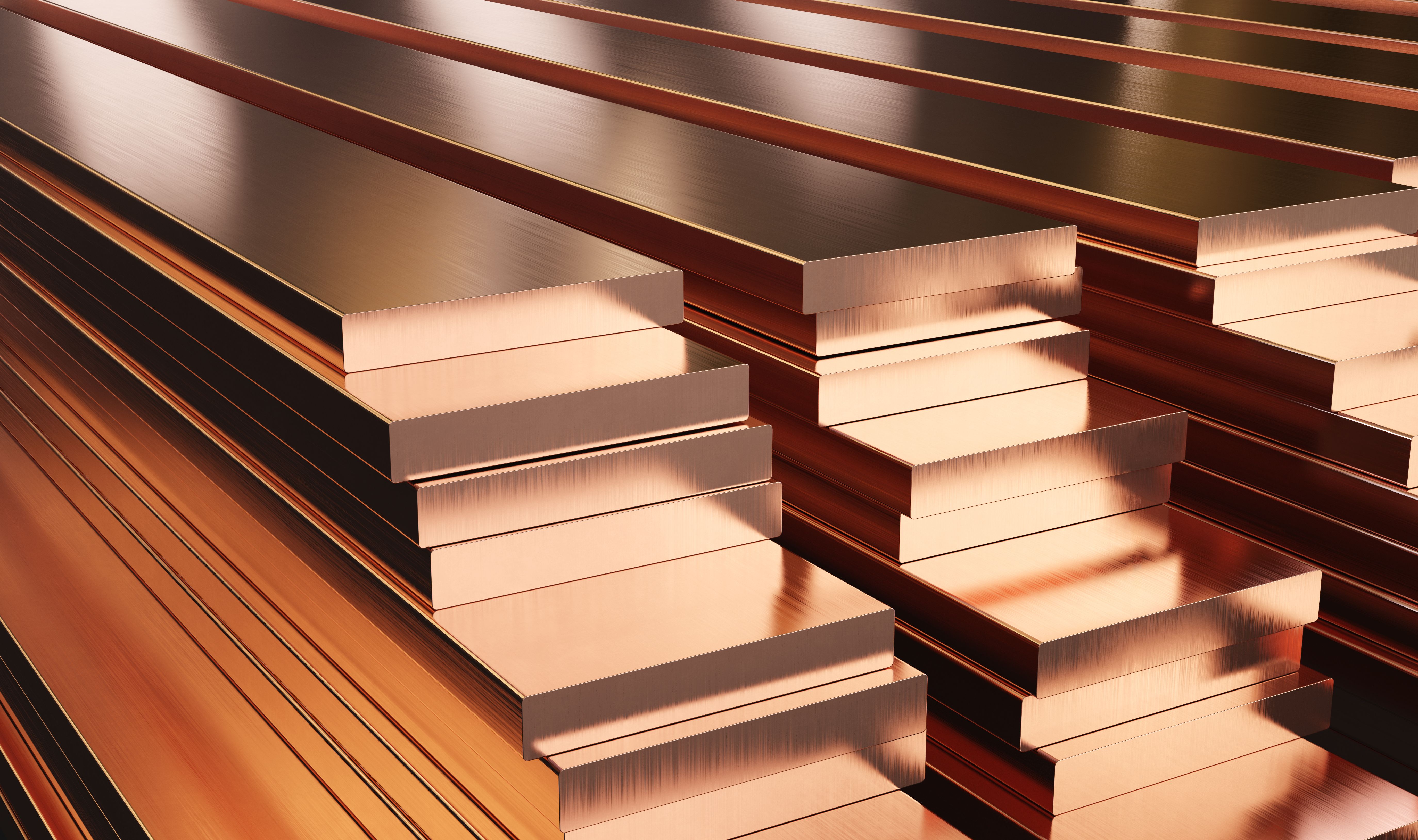Unraveling the Secrets of Laser-Produced Copper Plasma: A Comprehensive Study Using Electron Impact Excitation Cross-Sections
Researchers at the Indian Institute of Technology unveil a sophisticated collisional-radiative model offering insights into laser-produced copper plasma through precise electron impact excitation cross-section calculations.
Analyzing electron impact excitation cross-sections for transitions in copper, more information could be uncovered about the diagnostics of laser-induced plasmas, according to a recent study published in the Spectrochimica Acta Part B: Atomic Spectroscopy (1).
Warehouse of copper plates. Rolled metal products. 3d illustration. | Image Credit: © simone_n - stock.adobe.com

Researchers from the Indian Institute of Technology, led by Rajesh Srivastava, examined the intricate details of laser-produced copper plasma by focusing on the calculations of electron impact excitation cross-sections, specifically targeting transitions from the ground state of copper (Cu) 3d10 4s 2S1/2 to various fine-structure energy levels (1). Employing the fully relativistic distorted wave theory, the researchers also considered transitions from metastable states, utilizing atomic wave functions obtained through the multi-configuration Dirac–Fock approximation theory to ensure accuracy (1).
The calculated electron impact fine-structure level excitation cross-sections serve as the foundation for developing a fine structure-resolved collisional-radiative (CR) model (1). This model was employed for the diagnostics of laser-produced Cu plasma at atmospheric pressure. The CR model is coupled with spatially resolved optical emission spectroscopy (OES) measurements conducted in both the presence and absence of a static magnetic field (1).
There were three observed strong atomic emission lines of Cu (at 510.5, 515.3, and 521.8 nm) that the team used for diagnostics. These intensities, measured at different axial lengths from the Cu target, were corrected using the internal reference self-absorption method to account for radiation trapping effects (1). The normalized intensities derived from the CR model were then compared with their corresponding OES-measured values, enabling the extraction of crucial plasma parameters, including electron temperature and electron density (1).
The detailed CR model considers various processes such as electron-impact excitation and de-excitation, radiative absorption and decay, ionization, and two- and three-body recombination (1). This approach not only contributes to our understanding of laser-induced copper plasmas, but also presents opportunities for enhanced diagnostic capabilities in related fields.
This comprehensive study marks a significant stride in the realm of plasma diagnostics, paving the way for future advancements in laser-produced plasma research.
This article was written with the help of artificial intelligence and has been edited to ensure accuracy and clarity. You can read more about our policy for using AI here.
Reference
(1) Agrawal, A.; Baghel, S. S.; Sharma, L.; Srivastava, R. Electron impact fine-structure cross-section calculations of Cu and their applications in the diagnostics of laser-produced Cu-plasma through the collisional radiative model. Spectrochimica Acta Part B: At. Spectrosc. 2023, 208, 106764. DOI: 10.1016/j.sab.2023.106764
How Do We Improve Elemental Impurity Analysis in Pharmaceutical Quality Control?
May 16th 2025In this final part of our conversation with Harrington and Seibert, they discuss the main challenges that they encountered in their study and how we can improve elemental impurity analysis in pharmaceutical quality control.
How do Pharmaceutical Laboratories Approach Elemental Impurity Analysis?
May 14th 2025Spectroscopy sat down with James Harrington of Research Triangle Institute (RTI International) in Research Triangle Park, North Carolina, who was the lead author of this study, as well as coauthor Donna Seibert of Kalamazoo, Michigan. In Part I of our conversation with Harrington and Seibert, they discuss the impact of ICH Q3D and United States Pharmacopeia (USP) <232>/<233> guidelines on elemental impurity analysis and how they designed their study.
LIBS Illuminates the Hidden Health Risks of Indoor Welding and Soldering
April 23rd 2025A new dual-spectroscopy approach reveals real-time pollution threats in indoor workspaces. Chinese researchers have pioneered the use of laser-induced breakdown spectroscopy (LIBS) and aerosol mass spectrometry to uncover and monitor harmful heavy metal and dust emissions from soldering and welding in real-time. These complementary tools offer a fast, accurate means to evaluate air quality threats in industrial and indoor environments—where people spend most of their time.

.png&w=3840&q=75)

.png&w=3840&q=75)



.png&w=3840&q=75)



.png&w=3840&q=75)